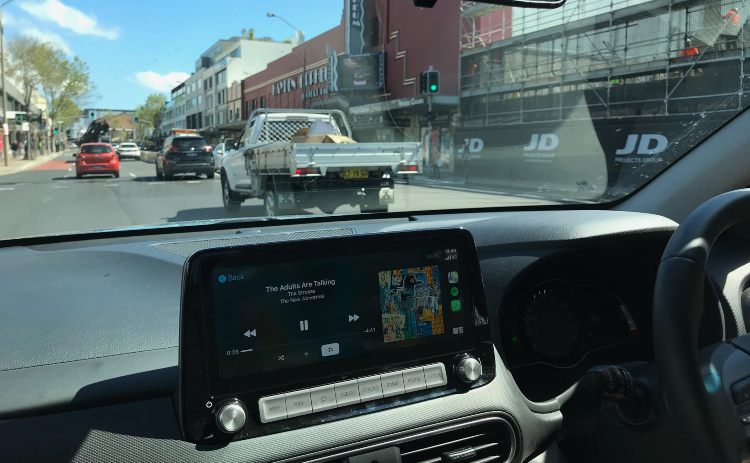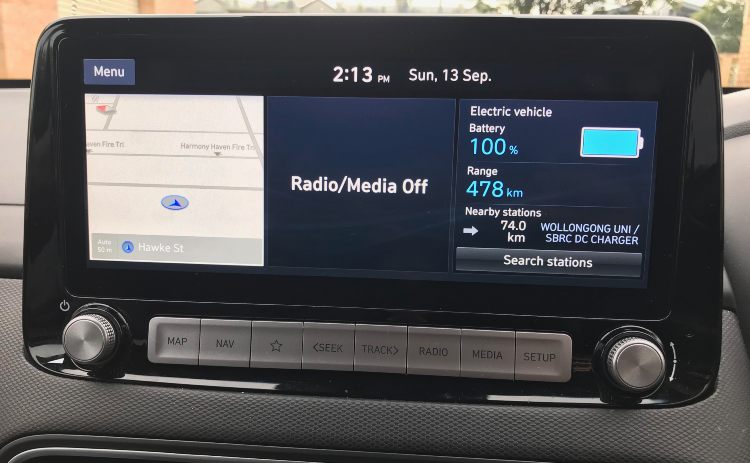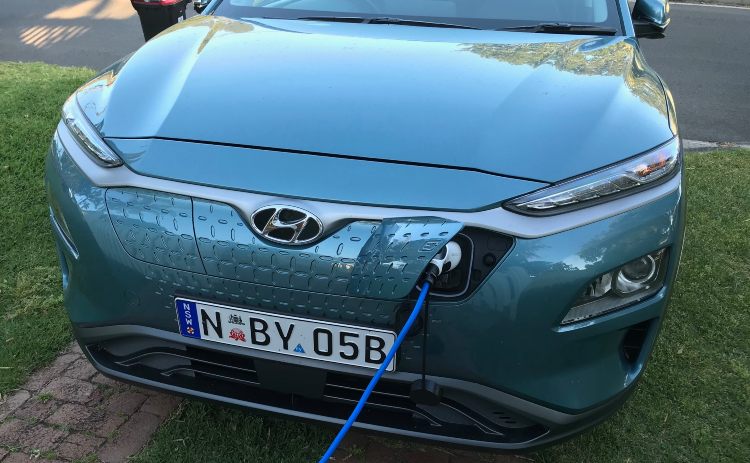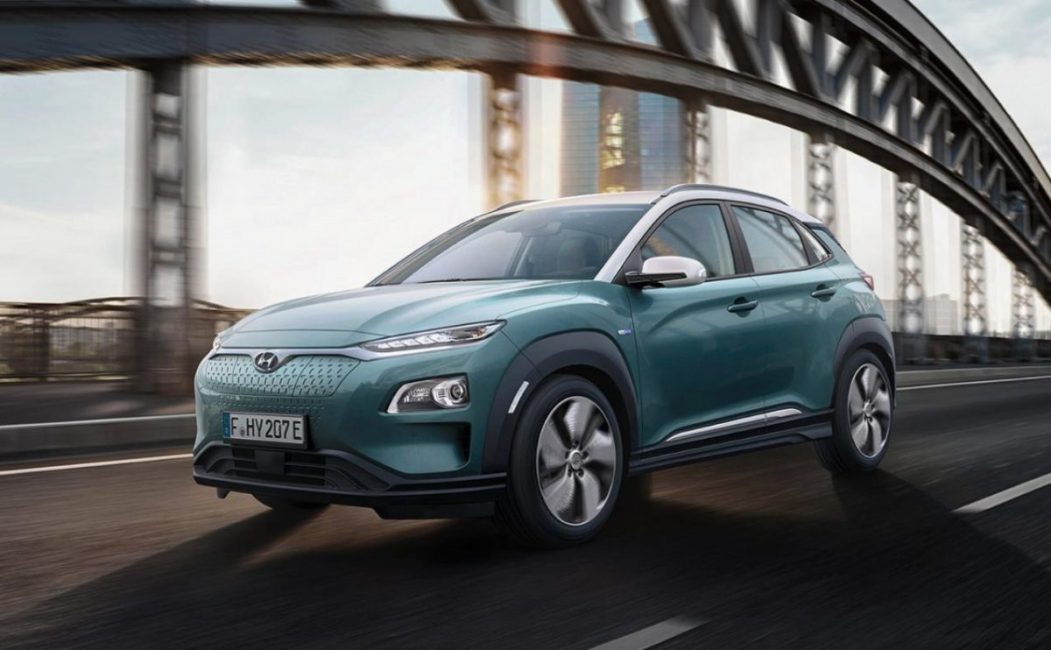Ever wondered what it’s like to take a road trip with an electric car? We have, but as yet have not had a chance to try one ourselves however our friend, travel writer Deborah Dickson Smith, recently took on a short trip to Jervis Bay and agreed to share the experience with us.
Many of us have started looking at ways to reduce our carbon footprint, and one way we can make a significant difference is to reduce our use of fossil fuels. With petrol prices soaring, electric cars seem even more appealing, but will an electric car limit your driving range? How far can you drive in an electric car? How can you take a road trip without worrying about where to recharge the car? Actually, it’s easier than you may think.
I recently road-tested the new Hyundai Kona to find out for myself how easy it is to do a road trip in an electric car with a weekend away to Jervis Bay.
Getting Started – It’s easier than you think!
The engine, like every other feature of this car, starts with the push of a button. You can choose your energy settings, opting for ‘Green’, ‘Comfort’ or ‘Sport’. It’s fairly intuitive – the lowest energy setting (Green) minimises things like engine power and air-conditioning, and ‘Sport’ has more oomph. I opt for ‘Comfort’, somewhere in between, which still provides plenty of oomph and less energy consumption.

My iPhone syncs easily with the dashboard, allowing me to access Siri if I want to make a call or ask directions, as well as other smartphone apps including Spotify, so I can put together a Road-trip Playlist for the journey to Jervis Bay.
How far can you drive an electric car?
An argument against electric cars that I’ve heard a lot is the lack of range, and I must admit, I worried at first about getting stuck somewhere on the highway with nowhere to charge the car. You can of course, plug your car in anywhere there is a standard 10-volt electrical socket, but I’d heard it could take over 24 hours to charge the car.

Just like any other recent-model car, the energy gauge tells you how full/empty the car is and your estimated range. With a fully charged battery, the Kona has a range of approximately 400 km. More than enough to get to Jervis Bay, but worth planning ‘fuel’ stops anyway.
How hard is it to get a charge?
Like you would for any road trip, it’s a good idea to plan your petrol/coffee/toilet stops. Public charging stations are rapidly being installed along the eastern coast of Australia however they are still not as prevalent as petrol stations, and not as easy to locate, with some in shopping centre parking lots, some in motel carparks and some in car dealerships.
The NRMA has installed 42 EV fast chargers across regional NSW along most major highways including the Hume, Newell, Sturt and Oxley Highways, as well as the Mitchell, Pacific, Olympic and Great Western Highways and has now partnered with Transport NSW to install a further 20. These are free for NRMA members.
These charging stations take roughly 40 minutes to take your charge to 80%.
As well as these, throughout the country there is a network of charging stations being installed by a company called Chargefox, some of these require payment, a per kWh rate which varies on location, and some are free of charge.

And then of course, if all else fails, the car comes with an adapter so you can plug it into an ordinary 10v socket at home (or elsewhere) overnight to charge. Once the adapter is plugged in and charging, it is locked in place, so no one can unplug your car while it’s charging.
Apps to help plan your trip.
There are a few really useful apps you can use to plan a driving holiday, which show where each charging station is along your planned route, as well as what type (standard, high speed or ultra-rapid) so you can work out whether to stop and stretch your legs for five minutes, or stop for lunch.
Plugshare is a free Electric Vehicle (EV) drivers’ app that uses user-generated content to provide the world’s largest public charging map. It’s a bit like a TripAdvisor for EV drivers, with reviews and a rating system for each charging station, so can locate reliable stations near you and even has a built-in trip planner.
Chargefox is similar, however it only provides information on the Chargefox network of charging stations. Tap on a location, find the address, charging capacity and plug types, get directions and then use the app to unplug the charging port and pay for a high-speed charge. The Chargefox network includes standard DC (22kW), fast (50kW) and ultra-rapid chargers (350kW), capable of delivering up to 400kms of range in 15 minutes. All ultra-rapid chargers are powered by 100% renewable energy.
The most useful resource I found was a web app called A Better Route Planner. You simply enter the make and model of the car you’re driving, and where you plan to drive to. The app will then drop pins along your route to show you where to find compatible charging stations, and you can plan an itinerary around each one.
On my planned driving route the app pinned a high-speed charging station at Shell Cove, roughly halfway between Sydney and Jervis Bay, and made a recommendation to stop here for five minutes to take the car from 60% back up to 70% before continuing on to Jervis Bay. Just enough time to grab a coffee and continue on!
Hotels and motels with charging facilities
Following a promotional effort by Tesla, some regional hotels and motels have high speed charging stations, but they’re not all compatible with all cars. The standard for Australia is now Type 2, but some charging stations were installed before the standard was agreed.
It’s a good idea to ask about charging before you book. My chosen accommodation in Jervis Bay, the Huskisson Bayside Resort, allowed me to park my car next to the laundry and charge overnight – by morning the car was back to 80 per cent, ready for the drive home.
About the Author
Deborah Dickson-Smith is an accomplished travel writer, ocean lover and passionate eco-warrior. As an avid scuba diver, Deb’s explored most of the NSW coast in search of great dive spots. Keen to explore the coast more sustainably, Deb decided to test drive an electric car for her dive road trips.
Looking for Getaway Ideas?
Check out some of our favourite weekend trips for inspiration.

